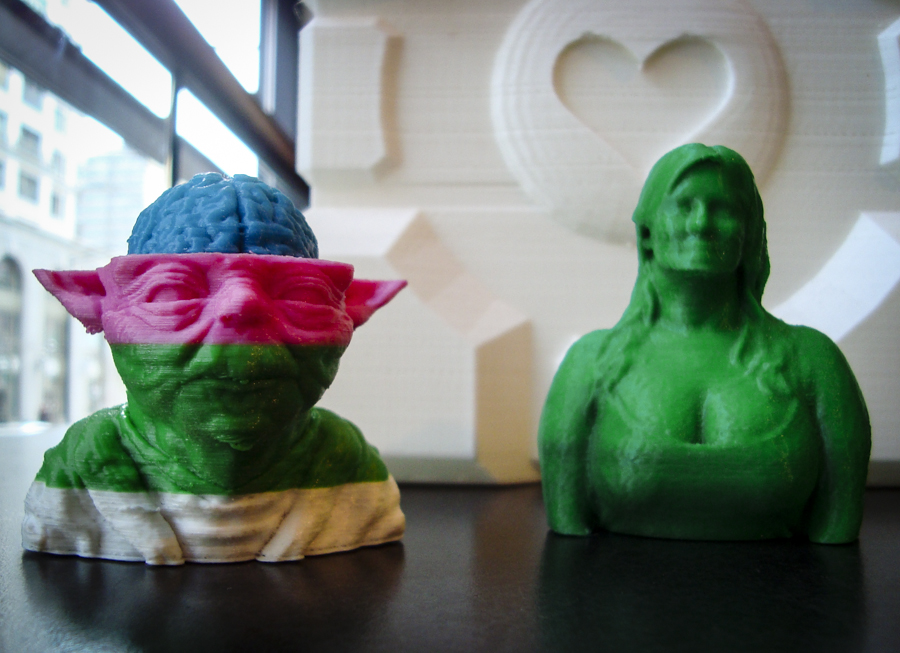3D printed skulls. 3D printed candy. 3D printed cars. With growing enthusiasm from industries ranging from medicine to aerospace for its uses in rapid manufacturing and prototyping, the possibilities for 3D printing seem endless. 3D printing has existed in the manufacturing world since the 1980s, and has captured widespread attention within the last five years. As the technology becomes more accessible and affordable to the general public, it won’t be long before you find one in your home.
“The main strength of 3D printing is that it is personal,” said Alex Ruaux, founder of Molecularcode 3D Printing, a 3D printing consulting service in Montreal. 3D printing does not involve a physical mold, making it easy to personalize a printed item. Models can be created using computer-aided design (CAD) software. Open-source online repositories such as Thingiverse allow users to upload their designs for public use. Once a model is made, information is fed to the 3D printer through a set of instructions indicating the height and density for each layer. The printer then creates your model by extruding molten plastic through a fine nozzle. The model is created in layers; each new layer solidifies before another is added.
An alternative 3D printing method provides a much wider selection of materials. These printers lay down a very thin layer of powder and fuse it with heat – most often using a laser. Through this approach, almost any material that can be granulated (metal, sugar, etc.) can be used for printing. This printing method is applied mainly to industrial-grade printers (i.e., building parts in the aerospace industry); however, Ruaux speculates that this is the direction household printers will shift toward in the future, given its broader range of possibilities.
3D printing is an additive process. Because a model is built layer-by-layer, much less material is wasted than with subtractive processes such as carving or drilling. The amount of material in the finished object is determined by adjusting the density calculation. The finished objects maintain their structural integrity for a fraction of the weight of a regularly manufactured object.
Plastic is one of the most common materials for home 3D printers. 3D printer filaments come in the form of a ‘plastic string’ wrapped around a spool. New inventions such as Filabot, a personal filament maker, allow individuals to melt down household plastics into printer filaments, allowing huge possibilities for the future of home recycling.
Companies such as MakerBot and RepRap are working to develop more affordable desktop-use printers. As this technology becomes more accessible, manufacturing will start to penetrate the private sphere. It will bring manufacturing to homes – easing the process between design and creation. “A lot of things [we print] are for fun, but other things are personalized one off things – [for instance], when we really need something, but it has to fit this thing we already have. I had a SIM card for my phone and I didn’t have an adapter, so I printed out a card on my own,” reflected Ruaux.
Buying and setting up a new 3D printer is often a frustrating process. Most printers require self-assembly, and it can take months to become familiar with the software. Ruaux took almost three months to become comfortable with her first printer. Now she provides 3D printing consultations that involve talking to clients about which printer to buy, how to calibrate it, as well as choosing and using the right software. Presently, her clientele mainly consists of small start-up businesses or people with a specific project in mind. Like any other technology in its infancy, 3D printing requires continued refining to become fully reliable and accessible. A certain amount of mechanical computer skills are needed to operate these printers, making the entrance bar very high. However, at the rapid rate of 3D printing technology development, the day that the 3D printer becomes a common household product is not far off.
3D printing has been receiving a great amount of hype from a wide range of industries as well as the general public. It’s an amazing piece of technology with numerous implications for personal manufacturing and rapid prototyping. However, due to the ease of production, proper regulation will be required for the development of dangerous items such as the recently unveiled 3D printed gun.
Ruaux expects that we will see a steep increase of 3D printers in homes during the coming years. “It brings manufacturing and 3D designs into the home – and anyone can do it,” said Ruaux. “In the same way that digital cameras and personal computers have made making a video possible to do on your own, now you can think, create, and make things on your own.”
